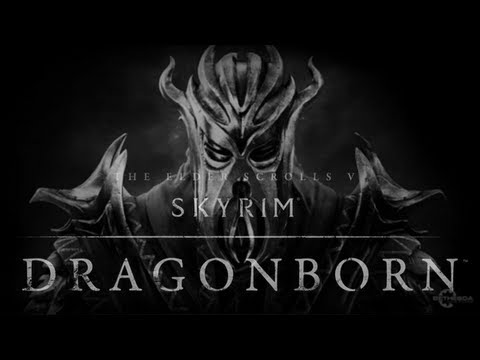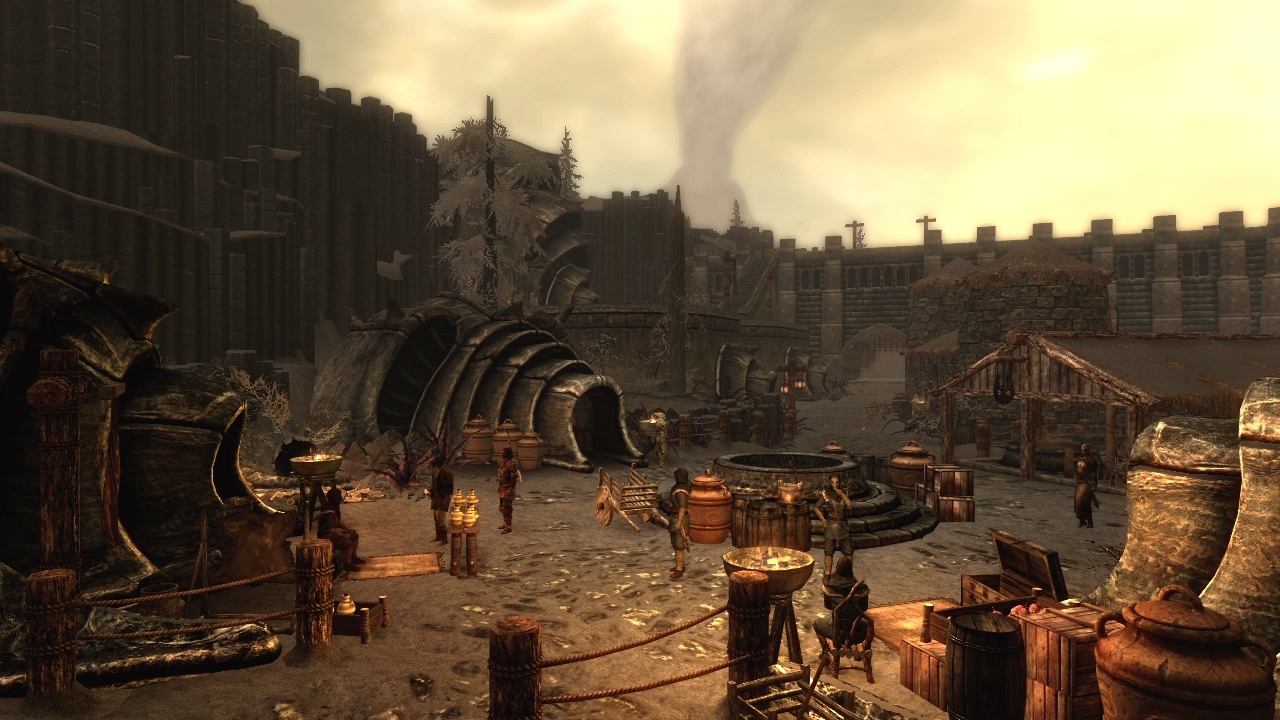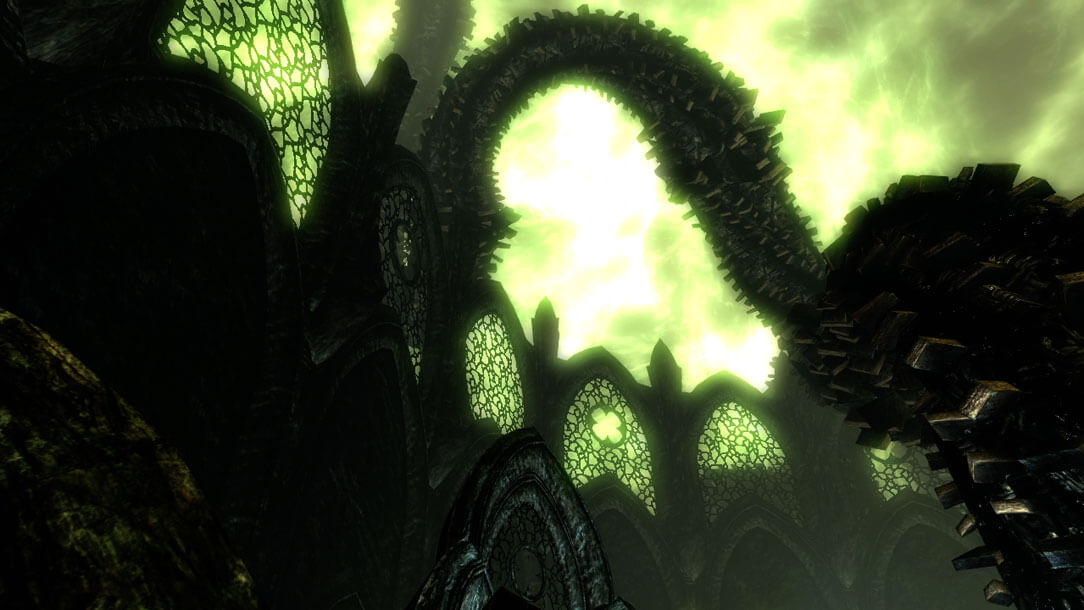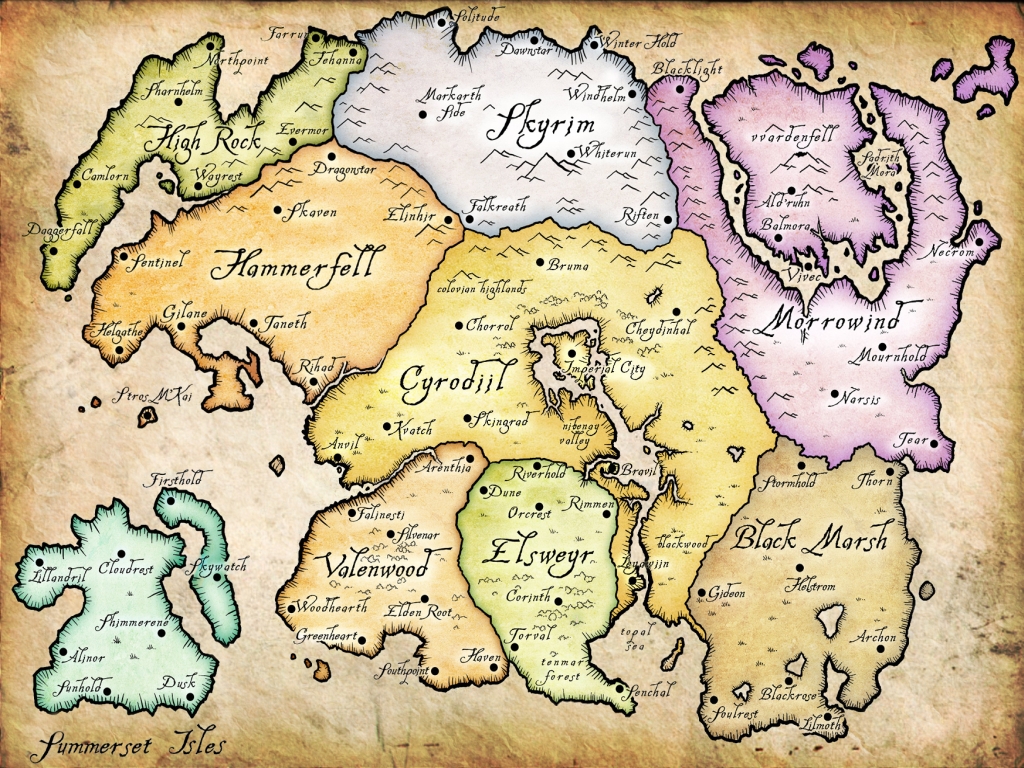
Skyrim was my most anticipated game of 2011. I preordered it, got it at midnight the day it was released, and played it solidly for almost an entire year, trying to complete as many quests as I could and try as many play styles as I could think of–including the infamous “being an NPC” play style (for example, see this series from PCGamer). I have been a fan of the series since Elder Scrolls 3: Morrowind, and really enjoyed this entry in the series; however, I had the misfortune to purchase Skyrim for PS3, meaning that when the Dawnguard DLC came out last year, I was forced to wait. And when Hearthfire came out, I continued to wait. Now, finally I am able to get DLC for Skyrim with Dragonborn, and my archmage/dragonborn was itching to be played again. Because of my attachment to the original game, I am going to try as much as possible to only rate the DLC features in this review (although this will be impossible in categories such as Graphics/Visual Effects). Also note that I played the game on the PS3, so my perspective will be skewed to that platform’s experience, but I will attempt to make comments on aspects of the game that would be different for the PC (I would assume the XBox would be a fairly similar experience).
Dragonborn takes your character to the island of Solstheim, a familiar locale to players of Morrowind’s Bloodmoon expansion. This island has changed considerably since the time of Morrowind’s story, as it now is controlled by the Dunmer as a kind of refuge from the destruction of the Red Mountain (which you can see spewing ash constantly in the southeastern sky of Solstheim. Rather than a civilization facing attacks from werewolves as in Bloodmoon, Solstheim is now threatened by a past Dragonborn named Miraak, who apparently joined the dragons and betrayed humanity. His spirit now enthralls the native Skaal (a branch of the Nords) people to build his temple. It is up to you, as a fellow Dragonborn, to stop Miraak.
1. Graphics/Visual Effects 8
Skyrim is now a somewhat dated game (being a year and a half old); however, it still holds up as a great looking game. The island of Soltheim, like Skyrim, has a characteristic wintry beauty that often caused me to stop and just look out over the landscape. I found that with the recent patching Bethesda has been releasing for PS3 versions the game’s frame rate is considerably improved from when I played it through the first time. I know from reading the
Skyrim subreddit that PC users’ graphical experience would only improve because of available HD texture mods.
My favorite addition to the graphics of this game was the reimagined Dark Elf architecture, plant life, etc. The incredibly unique environment of Morrowind (which I find to be a far more imaginatively designed one than those of Cyrodiil [Elder Scrolls IV: Oblivion] and Skyrim) returns with new life in the improved Skyrim graphical engine. Although we only get a taste of this culture in Dragonborn, I think that it adds to the overall visual palette of Skyrim in a great way.
 |
| Raven Rock is a very cool example of Dark Elf architecture. What is even more interesting is how you can tell that it is built on top of older Imperial architecture, making Solstheim’s unique and deep history evident to the player. |
I think that with the improvements to graphic performance and the inclusion of a whole new cultural style with the Dark Elf architecture we have not seen since Morrowind, Dragonborn should rightly receive a 8 rating in Graphics/Visual Effects. In order to rate higher, it would need to have introduced higher resolution textures or other sorts of overall graphics improvements.
In my opinion, the story for Dragonborn was just “okay.” It involves a previous dragonborn, who was apparently evil, returning to Solstheim to build a temple for himself; the impression I got was that doing so would allow him to take physical form again. Of course, it would not be an Elder Scrolls DLC without intervention by some daedric lord or other, in this case Hermaeus Mora. While this plot device isn’t necessarily bad, I thought it was a tired from other Elder Scrolls titles. The actual “problem” in the DLC, then, seems almost exactly like the problem in Oblivion’s Shivering Isles–only in this older title it is Sheogorath who is the intrusive daedric lord. Honestly, I was hoping that Miraak, the evil dragonborn, would be more dynamic and powerful, but he is overshadowed by Hermaeus Mora, which in my opinion is a shame to the story. I would say this story is fun just for lore purposes with the story of Miraak included, but it’s a bit tiresome from an RPG game perspective.
3. Story Pacing–8
I did not have many complaints about the pacing of the story in Dragonborn. Like all other quests in Skyrim, you are free to complete them as quickly or slowly as you like. I have not rated this category a perfect 10, however, because the journeys through the “black books” seemed to drag on too long for my taste. This dragging was intensified by the fact that there are only two monsters in these books until you reach Miraak that you have to fight over and over again. Outside of the black books, however, the quests seem to pace very well.
 |
| These black book quests were a bit repetitive and slow for my taste. |
4. Gameplay–7
Gameplay in this DLC, for the most part, is exactly like Skyrim, with various questgivers and quests to complete throughout the island. Most involve finding or killing something. There are a few standard collecting quests on the island, such as the East Empire Company pendants–this is actually quite lucrative because the quest giver gives you 500 gold each.
The new gameplay elements in Dragonborn revolve around specialized shouts that you get as part of the main story that add new powers to your character. The first shout you receive on Solstheim is the dragon aspect shout, which gives you increased damage output and armor as well as increased shout potency. The catch with this shout is that it can only be used once per day, like a racial power. I found this shout fairly helpful, especially when my mage was forced to fight in close quarters with melee bosses, but I think there is a glitch with the shout that gives you decreased magicka regeneration, which was a huge hindrance for me. I found that my magicka bar just didn’t charge as quickly when I had dragon aspect in effect.
The second shout you receive is bend will. At first this shout is only good for activating the various stones of power around Solstheim (which is a goal in the main quest), but when you receive all three words this shout can force people to fight for you and tame dragons so that you can ride them.
The dragon riding mechanic is the main advertised feature of this game. I must admit, it was quite fun to be flying around on a dragon, but I found the feature a bit underdeveloped. For one thing, you cannot control the dragon, meaning that you are at the mercy of the dragons whims on which enemies to chase and where to look for targets. This can get irritating in the open world or Skyrim, where there is plenty of space for enemies to spread out. In addition, the game requires you to “lock on” to targets while you are on the dragon, which seems a bit out of the Skyrim style of play. This mechanic makes it so that you can just lock on to a target with a ranged spell and then attack whenever the dragon decides to face the enemy. I found this system a bit annoying; it made the game feel more cinematic and less interactive, which I always hate.
I think I will probably ride more dragons in my journeys through Skyrim just because it’s cool, but I was a bit disappointed with how the feature turned out. The other shouts, though, are useful and do add to the gameplay of the game.
5. User Interface/Controls–5
Again, this is something that has not really changed since the base game. The Skyrim interface is easy to use, as it has been simplified from Oblivion’s system. The problem I had with the interface relates only to console versions, as mage characters with many different spells will need to create a favorite menu of spells you want to use most often. In order to switch spells, you have to open this menu, which pauses the game. There is just no quicker way to switch spells. I found this system useful at first, but after using it for several months I have decided that it is a decided step backwards from Oblivion’s “hot key”-like, which allowed players to assign spells to certain directions on the control pad. This system was much quicker and broke immersion much less.
6. Soundtrack–9
When I first started playing Dragonborn, I thought that the soundtrack sounded like it was just the same as Skyrim; mostly because the first thing you do in Solstheim is to explore a Nordic-style barrow, which has the same environmental music as most dungeons in Skyrim. However, when I began exploring the island itself, I noticed a few new tracks that I found quite beautiful. In addition, the music accentuates the division of the island between the northern portion that is snowy and mountainous like Skyrim and the southern portion which is covered in ash and is similar to Morrowind, with settlements of dark elves and unique creatures of Morrowind such as the netch. The music in the southern half of the island is the same as the music of Elder Scrolls 3: Morrowind. This choice allows the player to feel the difference between this part of the island and its distinctively “Morrowind” flavor and the northern part; although the northern half has new background music in this DLC, it is similar in style to the Skyrim base game’s soundtrack, making that part of the island feel more like Skyrim (which it should).
The genius of Dragonborn’s soundtrack is a combination of new tracks and Morrowind tracks (like the one above). This combination lends Solstheim a really immersive atmosphere.
7. Replayability–3
Skyrim itself generally has a mediocre replay value. For me, this lack of high replayability has to do with the rather extensive player tutorial that cannot be skipped at the beginning of the game. This tutorial has stopped me several times when I wanted to create a new character because I just got bored waiting for it to end and let me go do what I want to do. In addition, most quests that are not radiant quests suffer in replayability because they remain the same on each playthrough. Skyrim itself, however, often counteracted this problem by having a huge number of quests, allowing players to usually find a good number of quests with a new character that they did not play through with a previous one; Dragonborn, being a much smaller map with far fewer quests, however, cannot benefit from this improvement to replayability. I think few players would be interested in playing through the story more than once.
8. Completeness–8
This category is difficult to rate for DLC because the category itself refers to DLC for a game. Therefore, I will focus on bug issues. As far as I could tell, the game was not terribly buggy despite my increased magicka regeneration from enchantments being nullified by Dragon Aspect. In addition, I did have a crash or two while playing through the main Dragonborn storyline. For these reasons, I think a rating of 8 is fair.
9. Support–7
Up to this point, I have had no problems with support for this DLC. The needed infrastructure is in place; however, PS3 users have had to wait for nearly a year for any DLC because of a lack of support on the PS3 console. For this reason, I think a 7 would be fair because it recognizes the problems PS3 users have had while recognizing that this particular DLC is working fine and is receiving proper support from Bethesda and Sony.
10. Uniqueness–5
Unfortunately, this DLC just did not seem all that unique to me. We’ve seen Solstheim before in Bloodmoon, making the location not very original (although it is a quite different climate than Bloodmoon’s Solstheim because of the Red Mountain eruptions). Working with the Skaal again, just as the player did in Bloodmoon, feels unoriginal as well, especially since the player is used to a predominantly Nord population in Skyrim.
The dragon riding ability is the only redeeming characteristic of this DLC as far as originality. It adds a new feature that has never been seen in an Elder Scrolls game and is decently entertaining. It brings the rating back up to a 5 overall.
The Intangible Rating: +4
I’m giving Dragonborn an intangible rating of +4 primarily because of what it adds to the lore of Elder Scrolls, with the story of Miraak’s betrayal of humanity. Many Elder Scrolls fans love the varied and interesting history of Tamriel and crave more information about its past and future. Dragonborn is definitely a strong DLC for building this lore. It adds even more lore by having stories about how the Dunmer came to Solstheim after the Red Mountain eruption. These aspects of the DLC give it character and the ability to immerse the player in the world of Tamriel.
 |
| Dragonborn certainly adds flavor to the ongoing narrative of Tamriel in the Elder Scrolls series. |
Therefore, although many aspects of the DLC are problematic or unoriginal, the overall rating for Skyrim: Dragonborn is 70. At this rating level I would recommend it to anyone who loves Skyrim or the Elder Scrolls series; however, people who only somewhat enjoyed Skyrim might find Dragonborn a bit disappointing.
Final Rating: 70/100





